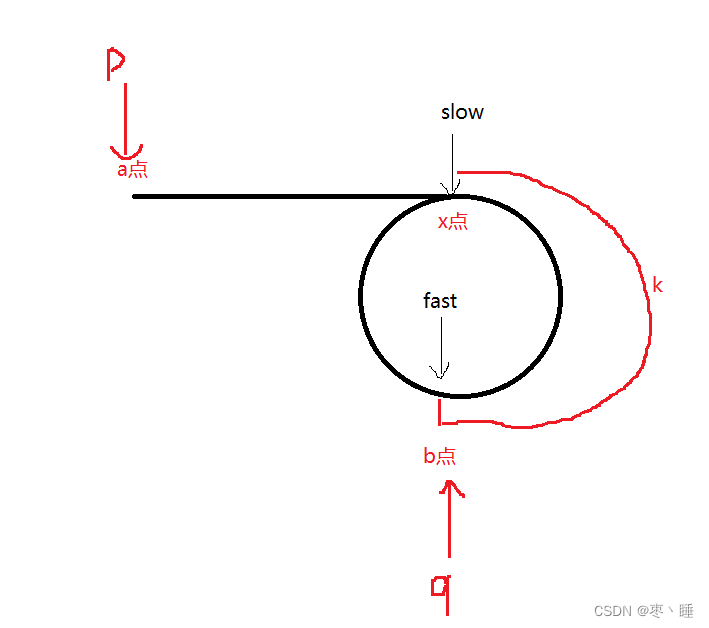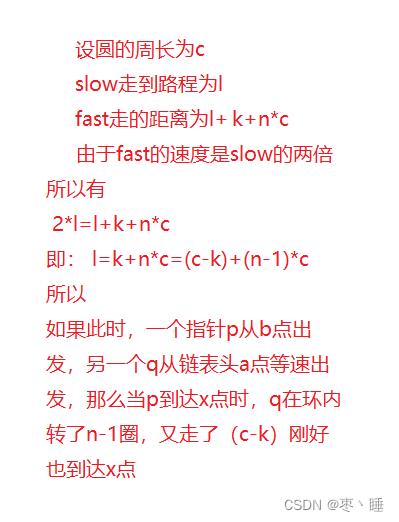目录
1. 原地移除数组中所有的元素val,要求时间复杂度为O(N),空间复杂度为O(1)。
2.给定一个带有头结点 head 的非空单链表,返回链表的中间结点。如果有两个中间结点,则 返回第二个中间结点。
3.将两个有序链表合并为一个新的有序链表并返回。新链表是通过拼接给定的两个链表的所有结点组成的。
4.编写代码,以给定值x为基准将链表分割成两部分,所有小于x的结点排在大于或等于x的结点之前 。
7.给定一个链表,返回链表开始入环的第一个结点。 如果链表无环,则返回 NULL
8.给定一个链表,每个结点包含一个额外增加的随机指针,该指针可以指向链表中的任何结点或空结点。 要求返回这个链表的深度拷贝。
(一)线性表的基本概念
1.基本概念
2.顺序表链表优缺点分析
(1)顺序表
优点:
- 随机访问:由于顺序表中的元素在内存中是连续存储的,因此可以通过下标直接访问元素,具有快速的随机存取能力。
- 索引操作高效:插入和删除元素时,如果知道元素的位置,可以通过移动少量元素来完成,因此在索引操作上具有较高的效率。
- 缓存友好:顺序表的元素存储在一段连续的内存中,更容易进行预读,有利于缓存的使用效率。
缺点:
- 插入和删除元素的代价高:在顺序表中插入和删除元素,特别是在中间位置,需要移动大量元素,导致操作的代价较高。
- 长度固定:顺序表的长度是固定的,当需要存储的元素个数超过长度限制时,需要重新分配内存空间,可能引发额外的开销。
- 空间利用不灵活:顺序表的内存空间需要一次分配完毕,因此存在可能浪费的情况,特别是在存储的元素数量较少时。
(2)链表
优点:
- 动态性:链表的长度可以动态增加或减少,不需要预先分配固定大小的内存空间,相比顺序表更加灵活。
- 插入和删除操作高效:链表在插入和删除元素时,只需要修改节点之间的链接关系,不需要移动大量元素,因此在插入和删除操作上具有较高的效率。
- 空间利用灵活:链表节点的内存可以分散在各个不同的位置,不存在连续内存空间的要求,因此可以充分利用零散的内存空间。
缺点:
- 随机访问低效:链表中的元素并不是连续存储的,因此无法通过下标直接访问元素,需要从头遍历链表找到目标节点,导致随机访问的效率较低。
- 额外空间占用:链表节点内除了存储数据外,还需要存储指向下一个节点的指针,因此相对于仅存储数据的顺序表,链表需要更多的存储空间。
- 内存分配开销:链表节点是动态分配的,每次插入一个新节点都需要执行内存分配操作,可能会增加额外的开销。
(二)线性表的实现
1.顺序存储
#define _CRT_SECURE_NO_WARNINGS 1
#include"SeqList.h"
//初始化顺序表
void InitSeqList(SL* psl)
{
assert(psl);
psl->arr = (dataType*)malloc(sizeof(dataType)*4);
if (psl->arr == NULL)
{
perror("InitMalloc");
return;
}
psl->capacity = 4;
psl->size = 0;
printf("Init Success\n");
}
//检查容量
void CheckCapacity(SL* psl)
{
assert(psl);
if (psl->capacity == psl->size)
{
dataType* tmp = (dataType*)realloc(psl->arr, psl->capacity * sizeof(dataType)*2);
if (tmp == NULL)
{
perror("realloc");
return;
}
psl->arr = tmp;
psl->capacity *= 2;
}
}
//头插
void PushFrontSL(SL* psl,dataType x)
{
//CheckCapacity(psl);
//int i = 0;
//for (i = psl->size - 1; i >= 0; i--)
//{
// psl->arr[i + 1] = psl->arr[i];
//}
//psl->arr[0] = x;
//psl->size++;
InsertSL(psl, x, 0);
}
//尾插
void PushBackSL(SL* psl, dataType x)
{
//CheckCapacity(psl);
//psl->arr[psl->size] = x;
//psl->size++;
InsertSL(psl, x, psl->size);
}
//头删
void PopFrontSL(SL* psl)
{
//assert(psl);
//assert(psl->size > 0);
//int i = 1;
//for (i = 1; i < psl->size; i++)
//{
// psl->arr[i - 1] = psl->arr[i];
//}
//psl->size--;
EraseSL(psl, 0);
}
//尾删
void PopBackSL(SL* psl)
{
//assert(psl);
//assert(psl->size>0);
//psl->size--;
EraseSL(psl, psl->size - 1);
}
//插入到指定位置
void InsertSL(SL* psl, dataType x, int pos)
{
CheckCapacity(psl);
assert(pos <= psl->size && pos >= 0);
int i = 0;
for (i = psl->size - 1; i >= pos; i--)
{
psl->arr[i + 1] = psl->arr[i];
}
psl->arr[pos] = x;
psl->size++;
}
//删除指定位置元素
void EraseSL(SL* psl, int pos)
{
assert(psl);
assert(pos >= 0 && pos < psl->size);
int i = 0;
for (i = pos + 1; i < psl->size; i++)
{
psl->arr[i - 1] = psl->arr[i];
}
psl->size--;
}
//修改数据
void ModifySL(SL* psl, int pos, dataType x)
{
assert(psl);
assert(pos >= 0 && pos < psl->size);
psl->arr[pos] = x;
}
//查找数据
int FindSL(SL* psl, dataType x)
{
assert(psl);
int i = 0;
for (i = 0; i < psl->size; i++)
{
if (psl->arr[i] == x)
{
return i;
}
}
return -1;
}
//释放顺序表空间
void DestorySeqList(SL* psl)
{
assert(psl);
free(psl->arr);
psl->arr = NULL;
psl->capacity = 0;
psl->size = 0;
}
//打印顺序表
void PrintSeqList(SL* psl)
{
assert(psl);
int i = 0;
for (i = 0; i < psl->size; i++)
{
printf("%d ", psl->arr[i]);
}
printf("\n");
}
2.链式存储
(1)无头非循环单向链表实现
注意事项:
1.当对链表的操作需要修改头节点时,应当传参传头节点的二级指针,因为改变结构体需要传结构体指针,要改变头节点指针,则要传头节点指针的指针,也就是二级指针
2.头节点二级指针不会为空,当链表为空时,头节点二级指针也不会为空,因为他存的是头节点指针的地址,而不是头节点指针
3.删除时应当确保链表不为空
4.对链表进行插入删除操作时,由于本链表不含哨兵位头节点,所以应当分情况讨论 链表为空,链表只有一个节点,以及链表有多个节点,三种情况。
#define _CRT_SECURE_NO_WARNINGS 1
#include"SList.h"
//创建新节点
SLNode* BuyNode(DataTypeSL x)
{
SLNode* newnode = (SLNode*)malloc(sizeof(SLNode));
if (newnode == NULL)
{
perror("malloc fail");
return NULL;
}
newnode->data = x;
newnode->next = NULL;
return newnode;
}
//打印
void PrintSL(SLNode* phead)
{
SLNode* cur = phead;
while (cur)
{
printf("%d->", cur->data);
cur = cur->next;
}
printf("NULL\n");
}
//头插
void PushFrontSL(SLNode** pphead, DataTypeSL x)
{
assert(pphead);
SLNode* newNode = BuyNode(x);//创建新节点
newNode->next = *pphead;//让新节点的下个节点连上当前头节点
*pphead = newNode;//将插入的这个新节点地址赋值给头节点从而作为新的头节点
}
//尾插
void PushBackSL(SLNode** pphead, DataTypeSL x)
{
assert(pphead);
SLNode* newNode = BuyNode(x);
//没有节点
if (*pphead == NULL)
{
*pphead = newNode;
return;
}
//一个节点
//多个节点
SLNode* tail = *pphead;//创建一个头节点的临时拷贝,保证操作时头节点不改变
while (tail->next != NULL)//找到尾节点
{
tail = tail->next;
}
tail->next = newNode;
}
//头删
void PopFrontSL(SLNode** pphead)
{
assert(pphead);
//如果链表本身为空,那再删除就报错
assert(*pphead);
//如果就一个数据
//如果有多个节点
SLNode* cur = *pphead;
*pphead = (*pphead)->next;
free(cur);
cur = NULL;
}
//尾删
void PopBackSL(SLNode** pphead)
{
assert(pphead);
//如果链表本身为空,那再删除就报错
assert(*pphead);
SLNode* tail = *pphead;
//只有一个数据
//有多个数据
while (tail->next!=NULL && tail->next->next != NULL)
{
tail = tail->next;
}
if (tail->next == NULL)
{
free(tail);
*pphead = NULL;
}
else
{
free(tail->next);
tail->next = NULL;
}
}
//查找
SLNode* FindSL(SLNode* phead, DataTypeSL x)
{
SLNode* cur = phead;
while (cur)
{
if (cur->data == x)
{
return cur;
}
cur = cur->next;
}
return NULL;
}
//目标节点后插入
void InsertBack(SLNode* pos, DataTypeSL x)
{
assert(pos);
SLNode* newNode = BuyNode(x);
newNode->next = pos->next;
pos->next = newNode;
}
//目标节点后删除
void EraseBack(SLNode* pos)
{
assert(pos);
assert(pos->next);
SLNode* tmp = pos->next;//先保存要删除节点的位置,以便可以释放空间
pos->next = pos->next->next;
free(tmp);
}
//目标节点前插入
//因为目标节点前插入考虑到如果链表只有一个节点,那么这个插入操作就相当于头插,而头插需要改变头节点的位置,所以应当传二级指针
void InsertFront(SLNode** pphead, SLNode* pos, DataTypeSL x)
{
assert(pphead);
assert(pos);
SLNode* cur = *pphead;
if (cur == pos)
{
PushFrontSL(pphead, x);
return;
}
while (cur->next != pos)
{
cur = cur->next;
}
SLNode* newNode = BuyNode(x);
newNode->next = pos;
cur->next = newNode;
}
//目标节点删除
void EraseFront(SLNode** pphead, SLNode** pos)
{
assert(pphead);
assert(*pphead);
assert(pos);
if (*pphead == *pos)
{
PopFrontSL(pphead);
}
else
{
SLNode* cur = *pphead;
while (cur->next != (*pos))
{
cur = cur->next;
}
cur->next = cur->next->next;
free(*pos);
*pos = NULL;
}
}(2)带头循环双向链表实现
#define _CRT_SECURE_NO_WARNINGS 1
#include"List.h"
//创建新节点
ListNode* buyNode(LTDataType x)
{
ListNode* newNode = (ListNode*)malloc(sizeof(ListNode));
if (newNode == NULL)
{
perror("malloc fail!");
return NULL;
}
newNode->_data = x;
newNode->_next = NULL;
newNode->_prev = NULL;
return newNode;
}
// 创建返回链表的头结点.
ListNode* ListCreate()
{
ListNode* prehead = buyNode(-1);
prehead->_next = prehead;
prehead->_prev = prehead;
return prehead;
}
// 双向链表销毁
void ListDestory(ListNode* pHead)
{
ListNode* cur = pHead;
cur = cur->_next;
while (cur!=pHead)
{
ListNode* tmp = cur;
cur = cur->_next;
free(tmp);
}
free(pHead);
}
// 双向链表打印
void ListPrint(ListNode* pHead)
{
ListNode* cur = pHead->_next;
printf("prehead<==>");
while (cur != pHead)
{
printf("%d<==>", cur->_data);
cur = cur->_next;
}
printf("NULL");
printf("\n");
}
// 双向链表尾插
void ListPushBack(ListNode* pHead, LTDataType x)
{
assert(pHead);
ListInsert(pHead, x);
//ListNode* cur = pHead;
//ListNode* tail = pHead->_prev;
//ListNode* newNode = buyNode(x);
//newNode->_next = cur;
//cur->_prev = newNode;
//tail->_next = newNode;
//newNode->_prev = tail;
}
// 双向链表尾删
void ListPopBack(ListNode* pHead)
{
assert(pHead);
assert(pHead->_next != pHead);
ListErase(pHead->_prev);
//ListNode* cur = pHead;
//ListNode* prevTail = cur->_prev->_prev;
//ListNode* tail = cur->_prev;
//pHead->_prev = prevTail;
//prevTail->_next = cur;
//free(tail);
}
// 双向链表头插
void ListPushFront(ListNode* pHead, LTDataType x)
{
assert(pHead);
ListInsert(pHead->_next, x);
//ListNode* cur = pHead;
//ListNode* head = cur->_next;
//ListNode* newNode = buyNode(x);
//newNode->_next = head;
//newNode->_prev = cur;
//cur->_next = newNode;
//head->_prev = newNode;
}
// 双向链表头删
void ListPopFront(ListNode* pHead)
{
assert(pHead);
assert(pHead->_next != pHead);
ListErase(pHead->_next);
//ListNode* cur = pHead;
//ListNode* head = cur->_next;
//ListNode* nextHead = head->_next;
//cur->_next = nextHead;
//nextHead->_prev = cur;
//free(head);
}
// 双向链表在pos的前面进行插入
void ListInsert(ListNode* pos, LTDataType x)
{
assert(pos);
ListNode* newNode = buyNode(x);
ListNode* prevPos = pos->_prev;
prevPos->_next = newNode;
newNode->_prev = prevPos;
pos->_prev = newNode;
newNode->_next = pos;
}
// 双向链表删除pos位置的节点
void ListErase(ListNode* pos)
{
ListNode* prevPos = pos->_prev;
ListNode* nextPos = pos->_next;
prevPos->_next = nextPos;
nextPos->_prev = prevPos;
free(pos);
}
// 双向链表查找
ListNode* ListFind(ListNode* pHead, LTDataType x)
{
ListNode* cur = pHead->_next;
while (cur != pHead)
{
if (cur->_data == x)
{
return cur;
}
cur = cur->_next;
}
return NULL;
}(三)线性表应用(常见OJ题目)
数组相关OJ
1. 原地移除数组中所有的元素val,要求时间复杂度为O(N),空间复杂度为O(1)。

思路:由于要求原地修改且时间复杂度为O(N),而顺序表的删除需要移动元素,所以不能采用常规的删除操作并且不能开辟新数组。
本题采用双指针的方法,一个指针p指向删除后所存放的有效数据,另一个指针q遍历数组
当 q所指向的元素不等于val时,将其赋给p指针指向的空间
需要注意的是,由于赋给p指针会覆盖掉原有的数据,所以被覆盖的数据都必须是已经判断过的数据,所以应当正向遍历。
int removeElement(int* nums, int numsSize, int val){
int p=0;
int q=0;
while(p<numsSize&&q<numsSize)
{
if(nums[q]==val)
{
q++;
}
else
{
nums[p]=nums[q];
p++;
q++;
}
}
return p;
}2.合并两个有序数组。

算法思路:
由于nums1数组开辟的是两个数组合并后的空间,如果正向合并,那就必须要移动数据,那样的话复杂度就会增加,所以如果采用倒着遍历的方法来合并,由于nums1最后的位置为空,所以不用担心覆盖掉没有判断过的元素,所以使用三指针法
end1指向nums1的有效元素末位
end2指向nums2的有效元素末位
i指向nums1末位,用于将比较过的元素放入nums1中
通过比较end1 end2 以倒序的形式一个一个放入,有序是倒序判断倒序放入,所以不用担心覆盖的元素没有判断过。
void merge(int* nums1, int nums1Size, int m, int* nums2, int nums2Size, int n){
//倒着合并
int end1=m-1;
int end2=n-1;
int i=m+n-1;
while(end1 >= 0 && end2 >= 0)
{
if(nums1[end1] > nums2[end2])
{
nums1[i--] = nums1[end1--];
}
else
{
nums1[i--] = nums2[end2--];
}
}
while(end2 >= 0)
{
nums1[i--] = nums2[end2--];
}
}链表相关OJ
1.反转链表
方法:画图

n3用于保存反转之前两个节点后的节点,防止反转后找不到了
注意: n1 n2是负责反转的指针,只有当n1 n2 指向最后两个节点并且完成指针改向后,才能算完成反转,如果当n3指向NULL时循环停止,那么此时最后一次反转就无法完成,所以只有当n2指向NULL时才表示最后一次反转已经完成,操作n3时注意判断空指针
/**
* Definition for singly-linked list.
* struct ListNode {
* int val;
* struct ListNode *next;
* };
*/
//改变指针指向法(三指针法)
struct ListNode* reverseList(struct ListNode* head){
if(head==NULL)return NULL;
struct ListNode* n1 = NULL;
struct ListNode* n2 = head;
struct ListNode* n3 = head->next;
while(n2)
{
n2->next = n1;
//迭代
n1 = n2;
n2 = n3;
if(n3)
n3 = n3->next;
}
return n1;
}2.给定一个带有头结点 head 的非空单链表,返回链表的中间结点。如果有两个中间结点,则 返回第二个中间结点。
方法:快慢指针,一个一次走一步,一个一次走两步
/**
* Definition for singly-linked list.
* struct ListNode {
* int val;
* struct ListNode *next;
* };
*/
struct ListNode* middleNode(struct ListNode* head){
if(head==NULL||head->next==NULL)
{
return head;
}
struct ListNode* slow=head;
struct ListNode* fast=head;
while(fast!=NULL&&fast->next!=NULL)
{
slow=slow->next;
fast=fast->next->next;
}
return slow;
}3.将两个有序链表合并为一个新的有序链表并返回。新链表是通过拼接给定的两个链表的所有结点组成的。
方法:利用哨兵位头节点可以让合并的尾插更加便捷,不需要通过判断两个链表头节点谁大谁小来确定头节点
注意:1.释放头节点空间
2.当一个链表为空时,剩下的链表只需要将剩下链表的头节点连到合并后的链表尾部即可,不用一个一个连。
/**
* Definition for singly-linked list.
* struct ListNode {
* int val;
* struct ListNode *next;
* };
*/
struct ListNode* buyNode(int x)
{
struct ListNode* plist=(struct ListNode*)malloc(sizeof(struct ListNode));
if(plist==NULL)
{
perror("malloc fail");
return NULL;
}
plist->val=x;
plist->next=NULL;
return plist;
}
struct ListNode* mergeTwoLists(struct ListNode* list1, struct ListNode* list2){
if(list1==NULL)return list2;
if(list2==NULL)return list1;
struct ListNode* prehead = buyNode(-1);
struct ListNode* cur=prehead;
while(list1!=NULL&&list2!=NULL)
{
if(list1->val<=list2->val)
{
cur->next=list1;
list1=list1->next;
}
else
{
cur->next=list2;
list2=list2->next;
}
cur=cur->next;
}
if(list2!=NULL)
{
cur->next=list2;
}
else
{
cur->next=list1;
}
list1=prehead->next;
free(prehead);
return list1;
}4.编写代码,以给定值x为基准将链表分割成两部分,所有小于x的结点排在大于或等于x的结点之前 。
思路:1.利用哨兵位可以避免判断空指针的麻烦
2.可以设置头指针和尾指针,便于对链表的控制
3.大体思路就是将大于等于目标值的节点尾插组成一个新链表,再将小于目标值的节点组成一个新链表,再将两个链表链接
4.由于是用小于目标值的链表链接大于目标值的链表,所以小于目标值的尾节点原本的next会被更改,但是大于目标值的链表的尾节点的next还连接着原来链表中的节点,需要置空。
注意:链表题不要怕设置指针变量,多设置几个指针变量有时可以减少很多麻烦
class Partition {
public:
ListNode* partition(ListNode* pHead, int x) {
struct ListNode * pless ;
pless= (struct ListNode *)malloc(sizeof(struct ListNode));
struct ListNode * pgreater;
pgreater = (struct ListNode *)malloc(sizeof(struct ListNode));
struct ListNode * lesstail = pless;
struct ListNode * greatertail = pgreater;
struct ListNode * cur = pHead;
while (cur) {
if (cur->val < x) {
lesstail->next = cur;
lesstail = lesstail->next;
} else {
greatertail->next = cur;
greatertail = greatertail->next;
}
cur=cur->next;
}
lesstail->next=pgreater->next;
greatertail->next=NULL;
pHead=pless->next;
free(pgreater);
free(pless);
return pHead;
}
};5.链表的回文结构。

思路:
1.找到链表的中间节点
2.反转后半段链表
3.前半段从头开始,后半段从原本链表的尾开始遍历,比较前后半段值是否相等
struct ListNode* reverse(struct ListNode* head){
if(head==NULL||head->next==NULL)return head;
struct ListNode* n1=NULL;
struct ListNode* n2=head;
struct ListNode* n3=head->next;
while(n2)
{
n2->next=n1;
n1=n2;
n2=n3;
if(n3)
{
n3=n3->next;
}
}
return n1;
}
//找到中间节点
struct ListNode* findMid(struct ListNode* head)
{
struct ListNode* slow=head;
struct ListNode* fast=head;
while(fast!=NULL&&fast->next!=NULL)
{
slow=slow->next;
fast=fast->next->next;
}
return slow;
}
class PalindromeList {
public:
bool chkPalindrome(ListNode* head) {
struct ListNode* cur=findMid(head);
cur=reverse(cur);
struct ListNode* phead=head;
struct ListNode* tail=cur;
while(phead!=NULL&&tail!=NULL)
{
if(phead->val!=tail->val)
{
return false;
}
phead=phead->next;
tail=tail->next;
}
return true;
}
};6.输入两个链表,找出它们的第一个公共结点。

思路:计算出两个链表的长度,定义两个指针分别指向两个链表的头节点,让长的链表先走出长度差,然后两个指针再一起走并判断指向的节点地址是否一致。
注意: 判断的是否相交是判断两个指针指向的地址是否相同。
/**
* Definition for singly-linked list.
* struct ListNode {
* int val;
* struct ListNode *next;
* };
*/
struct ListNode *getIntersectionNode(struct ListNode *headA, struct ListNode *headB) {
int l1=0;
int l2=0;
struct ListNode* n1=headA;
struct ListNode* n2=headB;
while(n1)
{
n1=n1->next;
l1++;
}
while(n2)
{
n2=n2->next;
l2++;
}
n1=headA;
n2=headB;
if(l1>l2)
{
while(l1-l2)
{
n1=n1->next;
l1--;
}
}
else if(l1<l2)
{
while(l2-l1)
{
n2=n2->next;
l2--;
}
}
while(n1!=NULL&&n2!=NULL&&n1!=n2)
{
n1=n1->next;
n2=n2->next;
}
if(n1==NULL||n2==NULL)return NULL;
return n1;
}7.给定一个链表,返回链表开始入环的第一个结点。 如果链表无环,则返回 NULL


/**
* Definition for singly-linked list.
* struct ListNode {
* int val;
* struct ListNode *next;
* };
*/
struct ListNode *detectCycle(struct ListNode *head) {
struct ListNode* fast=head;
struct ListNode* slow=head;
struct ListNode* cur=head;
while(fast!=NULL&&fast->next!=NULL)
{
fast=fast->next->next;
slow=slow->next;
if(fast==slow)
{
while(fast!=cur)
{
fast=fast->next;
cur=cur->next;
}
return cur;
}
}
return NULL;
}8.给定一个链表,每个结点包含一个额外增加的随机指针,该指针可以指向链表中的任何结点或空结点。 要求返回这个链表的深度拷贝。

基本思路:
1.把复制链表的节点,每个都插入到原链表对应节点的后面
2.通过拼接成的新链表,确定出复制链表random对应的节点
3.摘出复制链表,还原原链表
注意:画图画图画图!!!
/**
* Definition for a Node.
* struct Node {
* int val;
* struct Node *next;
* struct Node *random;
* };
*/
/*
基本思路:
1.把复制链表的节点,每个都插入到原链表对应节点的后面
2.通过拼接成的新链表,确定出复制链表random对应的节点
3.摘出复制链表,还原原链表
*/
struct Node* buyNode(int x)
{
struct Node* newnode=(struct Node*)malloc(sizeof(struct Node));
newnode->val=x;
newnode->next=NULL;
newnode->random=NULL;
return newnode;
}
struct Node* copyRandomList(struct Node* head) {
if(head==NULL)return NULL;
struct Node* cur=head;
struct Node* tmp=head;
//1.把复制链表的节点,每个都插入到原链表对应节点的后面
while(cur)
{
tmp=cur->next;
cur->next=buyNode(cur->val);
cur->next->next=tmp;
cur=tmp;
}
// 2.通过拼接成的新链表,确定出复制链表random对应的节点
cur=head;
while(cur)
{
struct Node* copy=cur->next;
if(cur->random==NULL)
{
copy->random=NULL;
}
else
{
copy->random=cur->random->next;
}
cur=copy->next;
}
//3.摘出复制链表,还原原链表
struct Node* prehead=buyNode(-1);
cur=head;
tmp=head->next;
struct Node* newList=prehead;
while(cur)
{
newList->next=tmp;
newList=newList->next;
cur->next=tmp->next;
cur=cur->next;
if(cur!=NULL)
{
tmp=cur->next;
}
}
struct Node* result=prehead->next;
free(prehead);
return result;
}






 本文介绍了线性表的基本概念,包括顺序表和链表的优缺点分析。详细讲解了顺序存储(动态顺序表)和链式存储(无头非循环单向链表及带头循环双向链表)的实现,并提供了相关操作如插入、删除等的代码示例。此外,文章还列举了一些基于线性表的在线编程题目,涉及数组和链表的处理技巧。
本文介绍了线性表的基本概念,包括顺序表和链表的优缺点分析。详细讲解了顺序存储(动态顺序表)和链式存储(无头非循环单向链表及带头循环双向链表)的实现,并提供了相关操作如插入、删除等的代码示例。此外,文章还列举了一些基于线性表的在线编程题目,涉及数组和链表的处理技巧。


















 被折叠的 条评论
为什么被折叠?
被折叠的 条评论
为什么被折叠?










